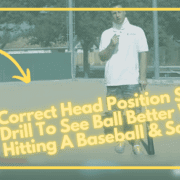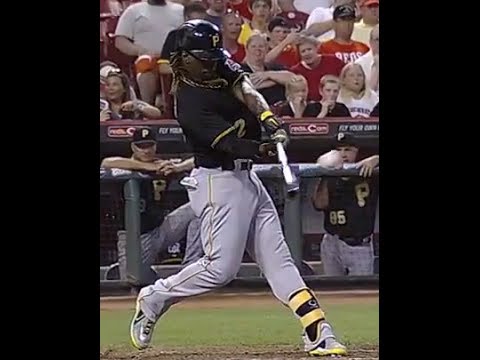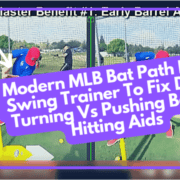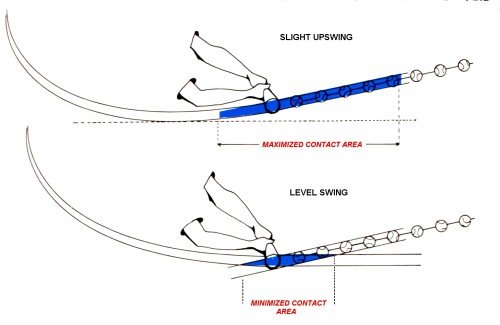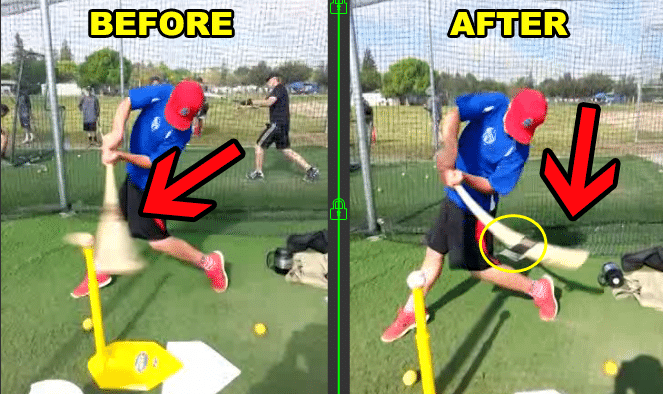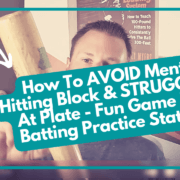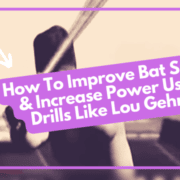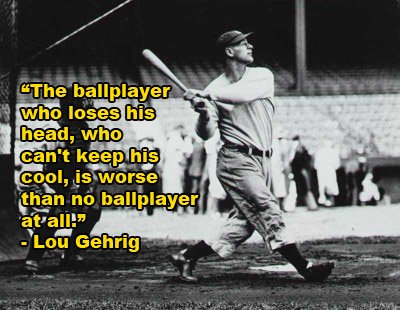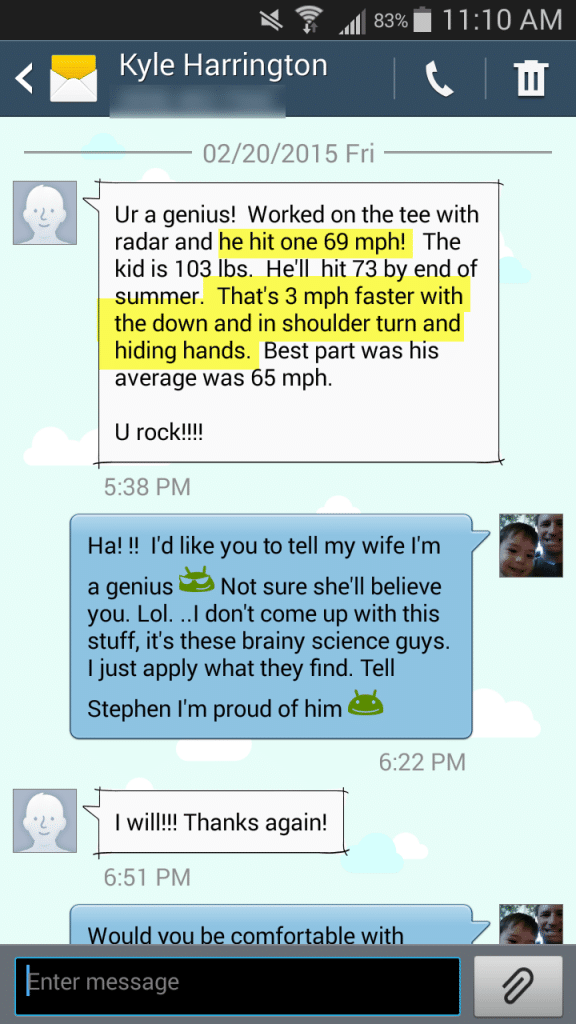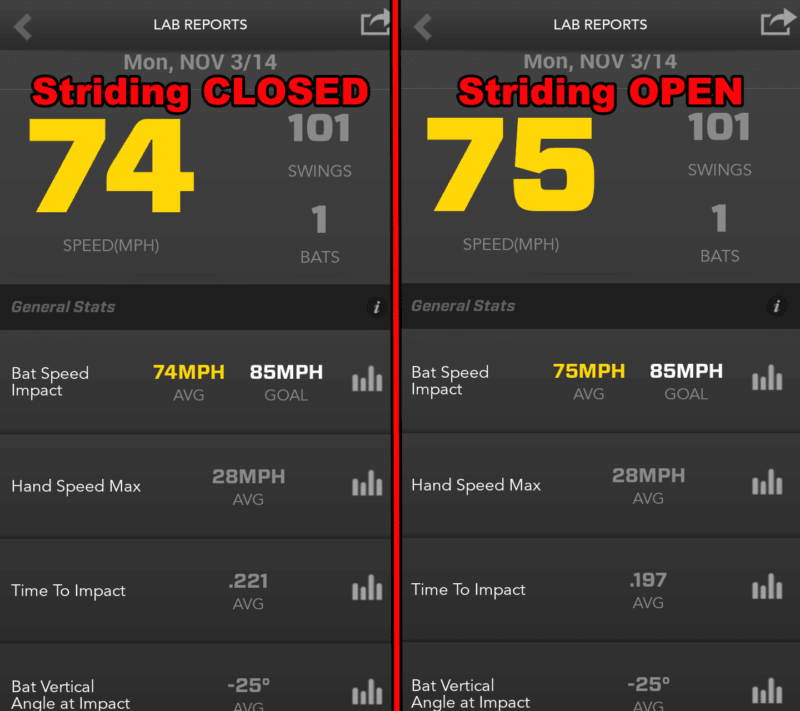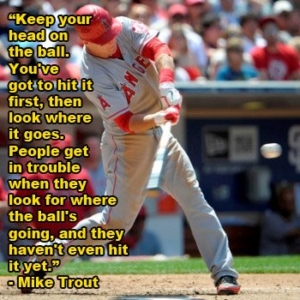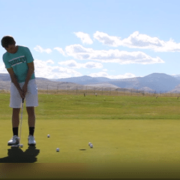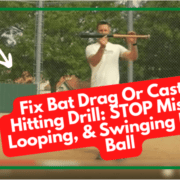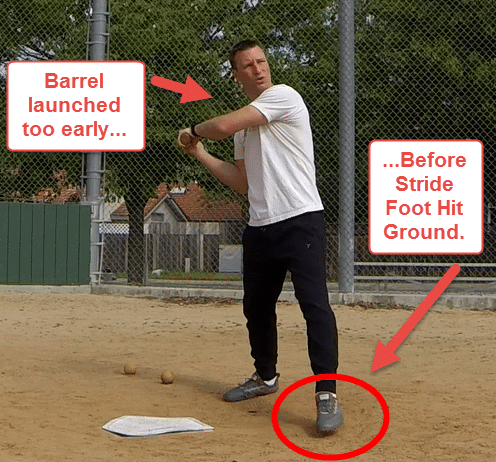Discover this correct head position swing drill that will help see the ball better when hitting a baseball or softball while batting.
Baseball Batting Drills For Youth: Make This Head Position Mistake And Dramatically Decrease Batted Ball Distance (Neck Brace Drill)
This is Part-2 of a 3-part baseball batting drills for youth video series coming straight out of the Catapult Loading System online video mini-course…
Sick of struggling with getting your hitters to hit the ball hard with more consistency? This is a simple 7-module online video mini-course that will help hitters weighing less than 100-pounds, hit the ball consistently over 300-feet in 60 days. You’ll be able to dramatically increase power without sacrificing swing quality.
CLICK the Link below to…
- Part 1 – How-To Hit The Ball Consistently Hard Like Hank Aaron
- Part 2 – [You Are Here] Head Position At Impact May Be Causing You To Lose Out On Repeatable Power [The Neck Brace Drill]
- Part 3 – #1 Biggest Lie In Hitting
In this baseball batting drills for youth video post, I’ll be walking you through the Neck Brace Drill. We’ll be going over:
- The One-Joint Rule
- Head movement that is okay
- Jace Case Study: BEFORE & AFTER of Neck Brace Drill
The One-Joint Rule
Dr. Kelly Starrett from TheReadyState.com, gives a perfect explanation of this in the following video (watch at about the 4:00 minute mark):
Baseball Batting Drills for Youth: Head Movement that is Okay
What’s better, and thanks to Dr. Kelly Starrett’s explanation above, we can look at what head movement IS NOT okay through impact:
- Chin to chest,
- Head back (like looking at the sky), and
- Ear into rear shoulder (for a righty, right ear to right shoulder).
Major League example of #1 is Andrew McCutchen (image to the right). Major League examples of #2 are Bryce Harper and Derek Jeter.
The only head movement that is okay through impact is a slight head turn. Generally speaking, the head position we want to model is during the follow through.
Jace Case Study: BEFORE & AFTER of Neck Brace Drill
I was able to experiment with the baseball batting drills for youth Neck Brace Drill with Jace, who’s one of my 10-year-old hitters that is 66-pounds.
Tiny compared to his peers.
However, over the last 6 months of hitting with me, and off a traditional batting tee, he now consistently registers 50-54-mph Ball Exit Speed with a non-wood bat.
In other words, Jace has the ability to hit the ball well over 200-feet, depending on the launch angle of the ball.
Now, we’ve been wrestling with his ‘bobblehead’ position for quite some time, and a big THANK YOU for the tip goes out to Coach Todd Bradley, head softball coach at Campbell University, the difference in one 45-minute session using the Neck Brace Drill can be seen in the image to the right.
Just about the same soft tossed pitch height.
Jace is still not perfect yet, but we’re getting there.
I know the baseball batting drills for youth we talked about in this post, will help your hitters and their head positioning up to, at, and passed impact.
Click the following Amazon links to get the same simple foam Youth Neck Brace & Adult Neck Brace
that we used with Jace.

